What does November mean on the Caribbean slope in the rainforest? For the Luna Nueva farm team, it means planting. We can confidently plant tree crops and annuals, certain that there will be both warmth and rain to welcome rhizomes and roots. And planting we are, with hundreds of prized cacao, allspice, peach palm, coffee, and other fruit trees poised to join our regenerative food forest. We’re also creating new gardens designed as living bird feeders, with flowering and fruiting plants arranged in just the right habitats to attract yet more avian abundance. So, yes, November is for planting.
But the wintry weather up north also signals bird migration. “Baltimore” orioles head down to Finca Luna Nueva around now, confident that our fields and forests will serve up delicious tropical delights. Here’s the Baltimore a/k/a Luna Oriole feasting on stinging nettle fruits near our biodynamic gardens.
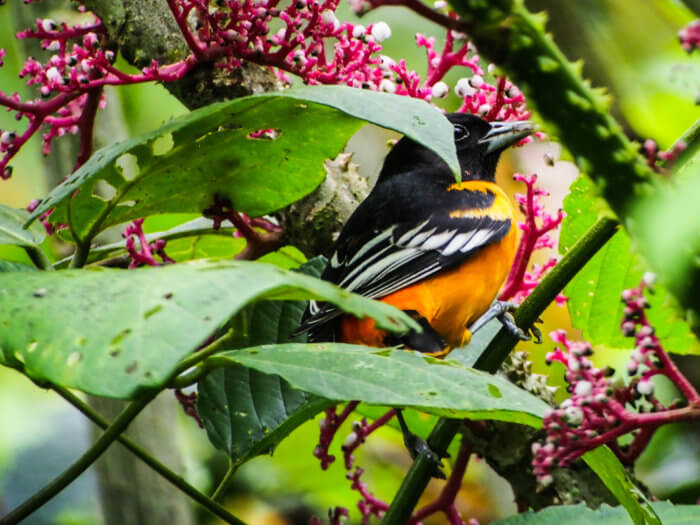
Focus on those stinging nettle fruits: can you detect the helical structure suggestive of our DNA? Rudolf Steiner, the founder of biodynamic agriculture, felt that stinging nettle was the most important plant for “healing” the soil, and we, like so many birds, are drawn into the magic of this plant. Birds were swarming around the nettles in our biodynamic prep area, and Kimberly Farrell, Alberto Palma, and I spent hours photographing darting White-Collared manakins, minuscule Olivaceous Piculet woodpeckers, the sergeant stripes of Passerini’s tanagers, and yet it was the irridescent green of the honeycreepers that captured us, again and again.
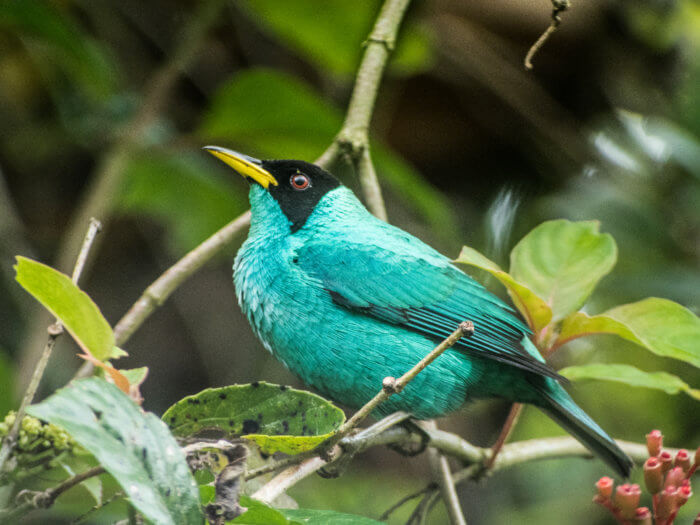
We set up about ten meters from the nettles, and I tried out my new Swarovski digiscope equipment. Yeah, when you live in (or travel to) paradise it’s nice to have great optics. This was my first field experience with the scope, so there were lots of missed opportunities. Beto, on the other hand, always delivers, and here’s one of his brilliant photos of the bird:
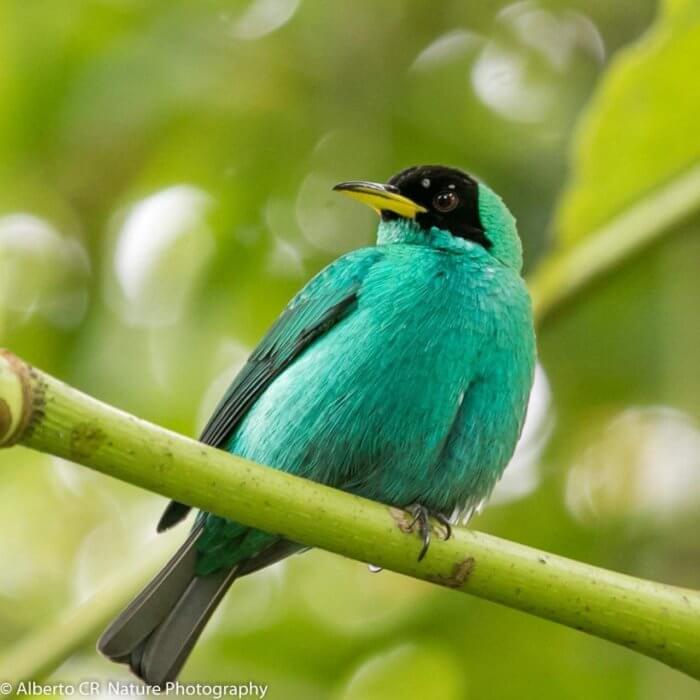
Then the Green Honeycreeper flew in for the fruits, and I did what I could to capture the moment:
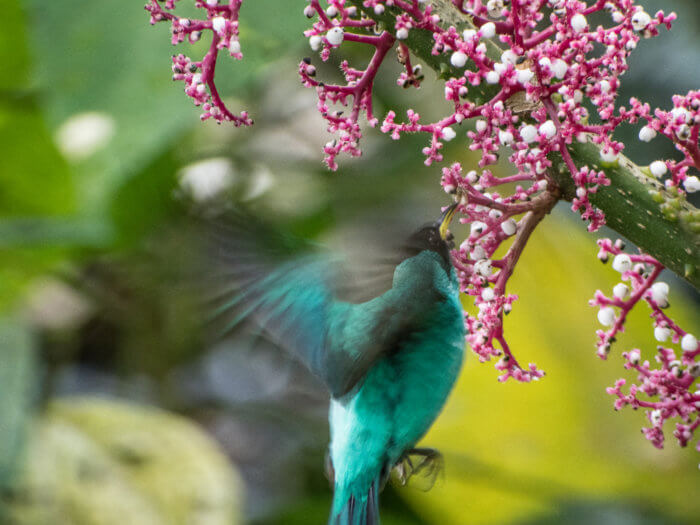
With Steven Farrell, we checked out an area delivering another November surprise. It’s in a slip of forest near the entrance to the Cabalonga Trail, where our nature guide Royvin Gutteriez spotted a most regal visitor – the King Vulture! It was a juvenile male, and he’s been around for a few days. We think he’s found a new home.
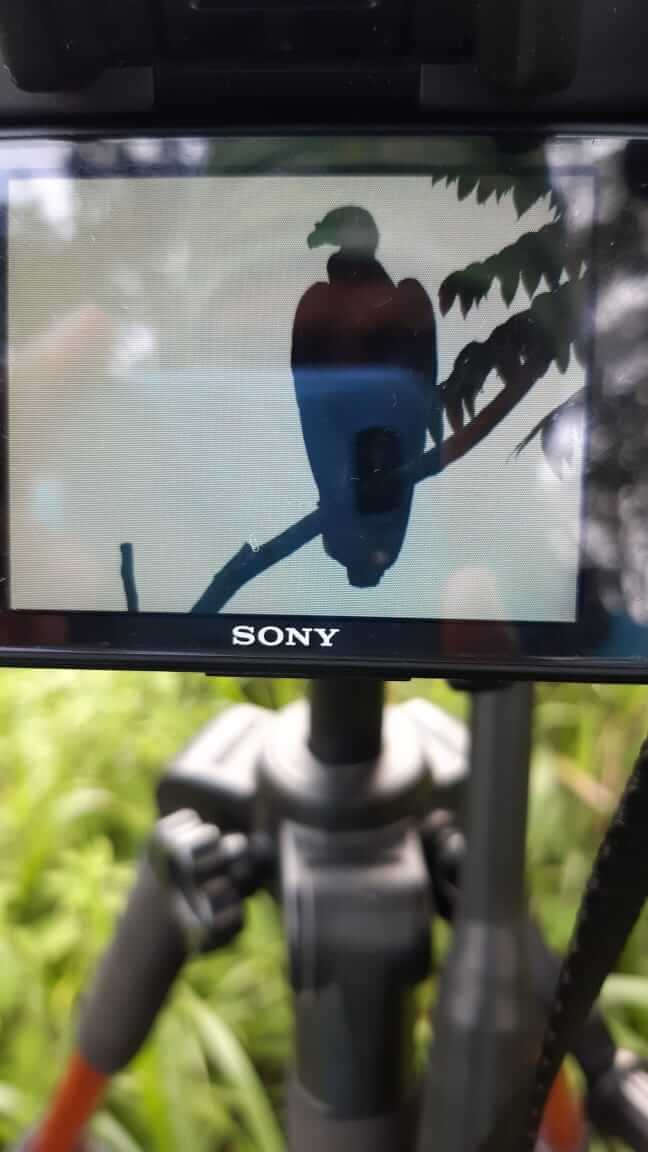
And then there’s the raucaus riot of our resident Scarlet Macaws to fill our November skies, ears, and eyes. These tropical giants, up to 32 inches long, have taken up residence in the misplaced pine trees planted by a confused prior owner. He must have thought that Honduran pines belonged down here at 10 degrees north, but even though they’re not native our feathered friends sure love them. Every evening, around 4:45 p.m., the scarlet squaudron trumpets its arrival. They settle in for the evening, then wake up the world at about 5 a.m., circle the property, and take off for the day.
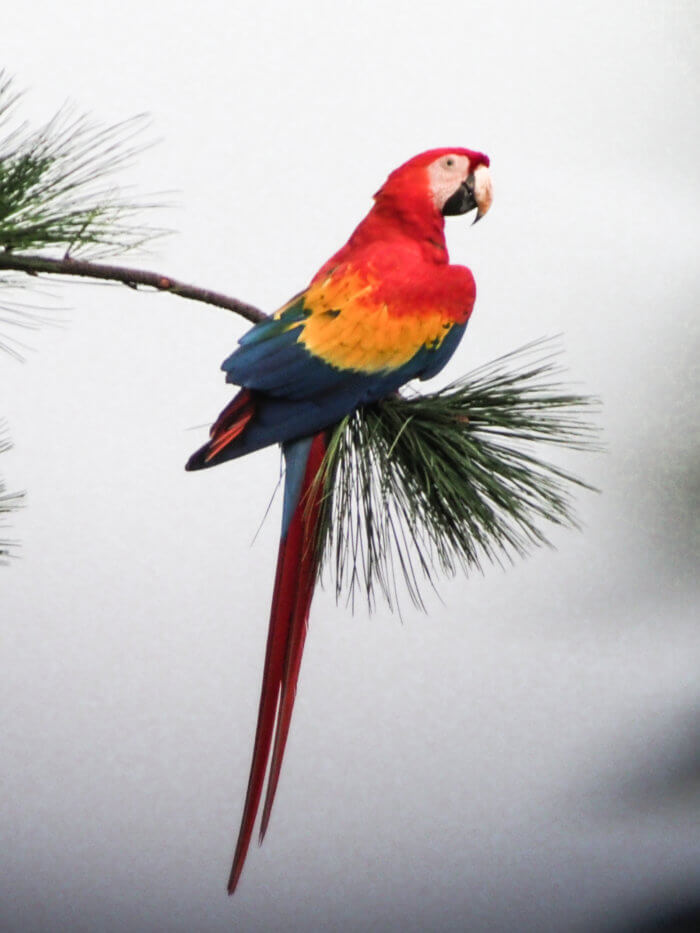
Last week, in yet another November surprise, Great Green Macaws came to the farm, settling in next to our new bamboo birding tower overlooking the Arenal Volcano. No photos (yet) of the Great Greens, but we vow to have them for an upcoming blog.
How we love you, November at Luna….

